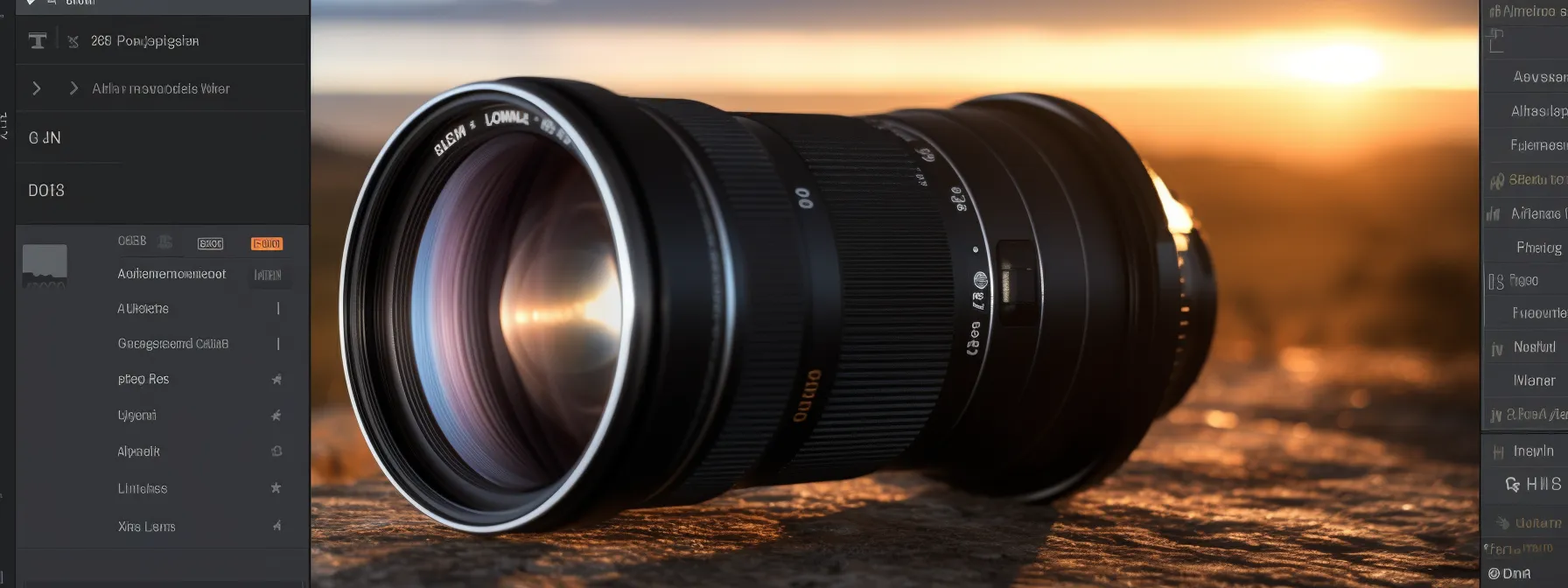Understanding RankBrain: Google’s AI Algorithm Explained
Understanding Google RankBrain and Its Mechanism of Work Navigating the complex world of SEO can be challenging, particularly with continual changes in the Google algorithm impacting search […]
Understanding Google RankBrain and Its Mechanism of Work
Navigating the complex world of SEO can be challenging, particularly with continual changes in the Google algorithm impacting search rankings.
A key player in this landscape is RankBrain, an artificial intelligence system that is significantly influencing SEO strategies.
This article, offers a thorough understanding of Google’s RankBrain, its functionalities, and how to effectively harness its potential for improved search ranking outcomes.
Keep reading to discover actionable insights into this machine learning wonder of the digital world.
Key Takeaways
- Google RankBrain Is an Artificial Intelligence System That Analyzes Search Queries and Improves the Understanding of User Intent
- RankBrain Evaluates the Relevance of Search Results Based on Semantics, Context, and User Satisfaction Metrics Such as Click-Through Rates and Dwell Time
- Content Creators Should Prioritize Searcher Intent and User Experience Over Keyword Density When Crafting Their Content
- Bounce Rate and Dwell Time Are Important Metrics for RankBrain in Assessing the Quality and Relevance of Web Pages
- SEO Professionals Should Stay Updated With Evolving Trends in RankBrain and Adjust Their Strategies to Align With User Intent and High-Quality Content
Introduction to Google RankBrain
As part of the Google Algorithm, RankBrain plays a crucial role in optimizing Google search rankings. The system is a prominent artificial intelligence (AI) feature that enhances the search engine’s interpretive skills.
This AI system, known as Google Rankbrain, harnesses machine learning to refine the search engine’s understanding of search queries. It channels artificial intelligence to recognize patterns and meanings, significantly improving the quality of search results.
Developed by Greg Corrado and his team, RankBrain is a powerful mechanism that has become an essential part of the Google search algorithm. Its primary purpose is to interpret and understand user intent behind search queries, serving them more accurate results.
For SEO professionals, understanding the workings of Google’s RankBrain is fundamental to crafting a successful SEO strategy. It’s important to focus on searcher intent and provide content that aligns with this intent to score higher in search engine land.
The Mechanism of RankBrain: A Deep Dive

The functioning of Google’s RankBrain is deep-rooted in machine learning algorithms. These algorithms allow it to analyze search queries and provide results that align with a user’s search intent. It’s more than just keyword matching; it’s about understanding the context and semantics behind a query.
RankBrain achieves this by using word vectors and machine learning technology. It recognizes patterns among complex, multi-word search queries, thereby interpreting searcher intent. The accuracy of its interpretations has made RankBrain an essential ranking signal.
This artificial intelligence system is constantly learning and evolving. Each search query is an opportunity for RankBrain to improve its understanding of language, context, and search engine query dynamics. It is a perfect blend of machine learning and AI, revolutionizing the way people interact with search engines.
RankBrain, along with Google’s Hummingbird and Knowledge Graph, forms a powerful and sophisticated system. It not only deciphers searcher intent but also helps in ranking web pages based on relevance. This intricate mechanism is at the heart of Google’s ever-evolving search engine.
Understanding Keywords in the Context of RankBrain

In the context of RankBrain, keywords are more than mere search terms used in a query. It doesn’t just consider the exact match of a keyword, but evaluates the overall context and intent behind the search. Keyword research consequential for creating relevant content now takes on a much deeper relevance.
If, for instance, a searcher types a long-tail keyword into the search engine, RankBrain interprets the query to understand the intent behind it. This is significant because long-tail keywords often indicate a clearer user intent.
The process of how RankBrain leverages keywords to decide search results goes somewhat like this:
- It considers the keywords used in the search query.
- It analyzes the semantics and context of the query.
- It understands the user intent behind the keywords.
- It chooses the most relevant search results in line with the intent.
The effective use of keywords is a pivotal component of SEO strategy. By comprehending this, content marketers can create more effective strategies. It’s evident that understanding the role of keywords in RankBrain’s mechanism offers a key to unlocking better SEO results.
Evaluating User Satisfaction: Role of RankBrain

RankBrain, with its emphasis on user intent, places significant importance on user satisfaction. It not only ensures that search results align with user intent, but it also evaluates how users interact with those results. This reinforces its goal of improving user experience.
A key way RankBrain achieves this is through tracking SERP click-through rates. Essentially, it gauges the relevance of a web page by analyzing how many times users click on its link in the SERP. A higher click-through rate indicates to RankBrain that the page is relevant to the search query.
Additionally, RankBrain looks at how long a user stays on a webpage, a metric known as “dwell time”. Longer dwell times suggest that the content on the web page served the user’s purpose, indicating higher relevance and likely ranking the page higher for similar queries in the future.
Therefore, proper optimization of web pages and content which satisfies searcher intent is critical. Not only will this lead to higher search rankings, but it will also significantly improve user experience. Understanding and implementing this aspect of RankBrain can have a significant impact on digital marketing strategies.
Optimizing Content: Influence of RankBrain

The influence of RankBrain extends deeply into content creation and optimization. Its focus on user intent and context improves the relevance of search results, encouraging content creators to write with the reader’s query and intent in mind.
When drafting a blog post or creating a web page, it is important to prioritize searcher intent over keyword density. RankBrain encourages the use of relevant keywords within the content, but also values the relevance and coherence of the overall message in relation to the user’s intent.
Furthermore, the RankBrain mechanism values user experience, so web pages should be designed with this in mind. Ensuring a smooth, user-friendly interface, readable texts, and valuable content enhances user experience and improves RankBrain’s perception of the page’s relevance.
Therefore, by bridging the gap between SEO and user experience, RankBrain as an artificial intelligence system has transformed the approach to content marketing. Acknowledging this correlation leads to the production of high quality and relevant content, better user experience, and a consequent boost in search rankings.
Tackling Bounce Rate and Dwell Time With RankBrain

Bounce rate and dwell time are two metrics that RankBrain considers when evaluating a web page’s relevance. The bounce rate refers to the percentage of visitors who leave a site after viewing only one page. A high bounce rate is interpreted as users not finding what they were looking for or not having a satisfactory user experience.
Dwell time, on the other hand, is the amount of time a user spends on a page after clicking on the search result before returning back to the SERP. Longer dwell times suggest that the user found the content relevant and useful. RankBrain recognizes this as a signal of quality content.
A website with high bounce rates and low dwell times may be penalized in search engine rankings. RankBrain views these factors as indicators of poor user experience or irrelevant content. Hence, SEO professionals must focus on providing quality content, a user-friendly interface, and satisfying the searcher’s intent to improve these metrics.
In conclusion, understanding RankBrain’s perception of bounce rate and dwell time can shape digital marketing efforts effectively. By focusing on enhancing user experience and creating high quality, relevant content, marketers can reduce bounce rates, increase dwell times, and improve their ranking on the search engine results page.
Key Optimization Strategies for RankBrain Results

Optimizing for RankBrain necessitates a deep understanding of site visitor behavior and user intent in relation to organic search results. To yield results, content should be engaging, relevant and in alignment with searcher’s intent. By following this principle, a website can drive both traffic and engagement, improving its standing with RankBrain.
Keyword research still holds power but in a more nuanced way. Emphasizing on long-tail keywords and phrases that reflect natural language, the content should be created. This encourages organic discovery of content by users who are genuinely interested in the subject, and it aligns well with RankBrain’s focus on intent over straight keyword matching.
Another tactic is to concentrate on improving the user’s overall experience. This involves the design of the website, site navigation, page load speed, and mobile optimization. With RankBrain’s attention to user satisfaction metrics, enhancing these aspects can improve dwell time and reduce the bounce rate, thereby potentially lifting Google ranking.
In essence, utilizing SEO tools like Search Atlas by LinkGraph can help decipher the intricacies of RankBrain and strengthen SEO strategies. A holistic and strategic approach to content marketing and technical SEO, fueled by a detailed understanding of RankBrain, can significantly boost a website’s visibility and ranking.
Emerging Trends: RankBrain and Future SEO Practice

As artificial intelligence and machine learning continue to evolve, the impact of RankBrain on SEO practices is expected to grow. The trend is increasingly shifting towards user intent rather than keyword density, with an added focus on high-quality, contextual content. The influence of RankBrain on current SEO practices can be observed in different areas:
- Emphasis on the civic intent of search queries.
- Increased importance of long-tail keywords and semantic search.
- Higher relevance of user experience metrics in ranking.
- Greater focus on high quality, contextual content over mere keyword optimization.
Additionally, it is predicted that there will be an increasing integration of voice search and local SEO in the RankBrain algorithm. The Google algorithm is progressively accommodating for natural language processing and voice search, requiring optimizers to adjust their techniques to stay competitive.
RankBrain, with its self-learning capabilities, is likely to become even smarter in understanding user intent and producing accurate results. SEO professionals, digital marketers, and content creators will need to keep pace with these advancements and adjust their strategies accordingly.
Reflecting on these emerging trends, it’s fair to predict that SEO practice must be agile, adapting to the new imperatives set by Google’s RankBrain. The way ahead clearly signals the need for an in-depth understanding of user intent, quality content, and a seamless user experience.
Conclusion
Grasping the mechanics of Google’s RankBrain is indispensable for any successful SEO strategy.
Understanding this complex artificial intelligence system will allow marketers to craft content that not only aligns better with user intent but also improves search engine rankings.
By focusing on long-tail keywords, user satisfaction metrics, and quality content, they can optimize their content to satisfy RankBrain’s algorithms.
Given the constant evolution of RankBrain, diving into its essence becomes not just an option but a need for those who seek digital visibility and success.














































































